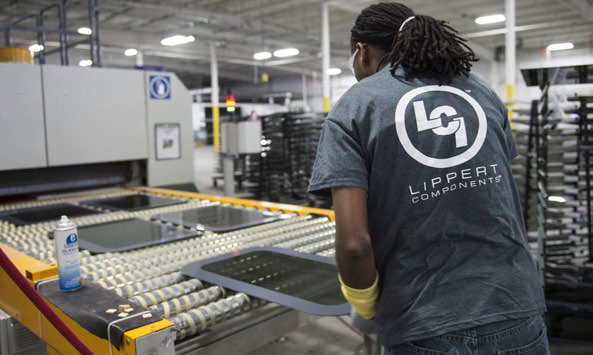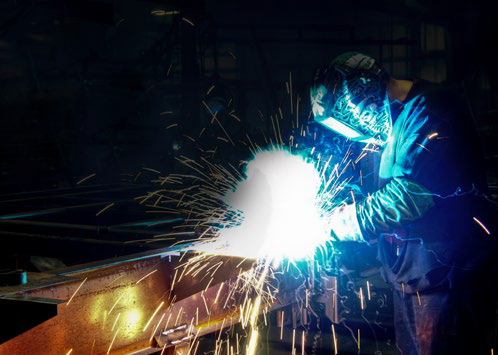Lippert Components
Enhancing collaborative innovation with 3DEXPERIENCE and ENOVIA
Since 2004, Lippert Components, Inc. (LCI™) has used Dassault Systèmes’ (3DS) SOLIDWORKS 3D design software application to drive product innovation. Although a series of acquisitions have required the company to operate in a multiCAD environment, other solutions quickly are being phased out across the enterprise in favor of SOLIDWORKS. In 2014, Lippert introduced 3,500 new recreational vehicle chassis designs, 700 new mobile home chassis designs, 500 new window designs, and 400 new door designs. In addition to all of this new product data, the company also processed 33,000 change orders.
In the past, to manage this vast amount of product data, Lippert had relied on ENOVIA SmarTeam from 3DS for 3D Digital Collaboration throughout its product development processes across the enterprise. Over the past decade, Lippert progressively expanded its use of SmarTeam to include the management of all engineering documentation, engineering change processes and parts management. It even piloted an in-house adaptation of SmarTeam as a quality management system.
Hitting a Wall
Despite its widespread use at Lippert, the company’s existing SmarTeam installation, however, limited its ability to upgrade SOLIDWORKS. “For years, SmarTeam worked really well with SOLIDWORKS; it’s a great integration,” said Ed Fennen, Director of Engineering Systems at Lippert Components, Inc. “But we ran into a wall with the way we use our configurations in SOLIDWORKS that was really unique. We have files with 7,000 configurations, and it kind of stopped SmarTeam. We couldn’t upgrade anymore; the solution just couldn’t work.”
So in 2010, Lippert began to search for a replacement for SmarTeam. After considering a number of other options, including Windchill and Teamcenter, Lippert chose ENOVIA V6 in 2012.
“Our criteria were, as I said, to implement an out-of-the-box quality management system that could be integrated into our Product Lifecycle Management (PLM) tiers, and to meet or exceed our existing document management capabilities with SmarTeam,” Fennen said. “In addition, because Lippert is growing internally and externally, we wanted to pursue other avenues like Program Management to replace manual aspects of our process that rely on Microsoft Excel, and to move the Manufacturing Bill of Materials (MBOM) away from our ERP to create a gated lifecycle process. Those are the big hitters that forced or required us to look elsewhere, and ENOVIA V6 fit the bill for pretty much all of it.”
ENOVIA V6 fit the bill for pretty much everything we were looking for … from quality and document management to program management and PLM-based manufacturing BOM capabilities that were compatible with our existing SOLIDWORKS installation.
Smooth Transition
Fennen wanted to employ a small in-house team and enlisted the help of a VAR (value added reseller) to transition from SmarTeam to ENOVIA V6. He called upon 3DS service partner xLM Solutions to help guide the project. With a strong background in customizations and data migrations focused on SmarTeam, ENOVIA V6 and SOLIDWORKS, xLM offered the PDM/PLM implementation experience the project required.
The migration from SmarTeam to ENOVIA V6 involved a vast number of files and existing data items. More than 2 million SOLIDWORKS objects were handled in SmarTeam, along with 225,000 non-CAD records. More than 300,000 objects of data were merged from both SmarTeam and Microsoft Dynamics (AX). Lippert also had nearly 185,000 Engineering Change Number (ECN) objects in SmarTeam.
The team’s goal was to support future growth with new ENOVIA V6 functionality, leaving no migration data “in a corner” that could not be expanded. They also sought to ensure migrated data appeared as though it were created new in V6.
Organizational Challenges
The transition to a part-centric system from a traditionally document-centric one proved to be one of the biggest organizational challenges for Lippert. “Parts are generally seen as just another object or level to manage,” Fennen explained. “It was important for us to provide clear and concise reasoning on the importance of the part becoming the lead object.”
Another change management hurdle for the team was to convince BOM managers of the benefits of moving MBOM ownership from ERP to PLM. “We really had to paint a clear vision of the benefits to the enterprise that would come with having the MBOM directly related to upstream processes and object,” Fennen said. “Until now, we’ve had the engineering BOM management inside SmarTeam via SOLIDWORKS with an Excel handoff to the BOM managers. They manually created the BOM in Excel, massaged it and manually input it into the business system.
“By moving the MBOM into ENOVIA V6, we have created that gated lifecycle process that will reduce transcription and quantity errors,” he added. “If we get a quantity wrong and the BOM is already sent out to three different plants, they order the wrong materials and the problem just cascades. Removing the hands-on approach in Excel is one of the big enhancements we’re going to get from ENOVIA V6.”
With ENOVIA V6, companies like Lippert are finding they can achieve Zero Error BOMs, eliminating missed market opportunities and product defects that result in recalls and scrap. By improving collaboration between the different product development and production functions with a Zero Error BOM, ENOVIA V6 makes the late discovery of issues and delayed product launches a thing of the past.

Driving the Rate of Innovation
Other benefits of ENOVIA V6 already are becoming apparent at Lippert. With SmarTeam, Lippert’s engineers could not dynamically update an assembly.
“An engineer had to shut down his assembly, go to SmarTeam, perform an operation and then go back and open the assembly again to work with the latest version,” Fennen explained. “And while that may seem trivial, it can take upwards of 20 minutes. If you do that two or three times a day, that’s easily an hour wasted. So that functionality is critical.
“In reviewing the ENOVIA-SOLIDWORKS interface …that works beautifully,” Fennen added. “An engineer can go to his component tree inside SOLIDWORKS, via the ENOVIA-SOLIDWORKS interface, find a component and more or less ‘refresh,’ and the new component is delivered. That can save many minutes in a person’s day, so that’s a big driver.”
Reducing delays drives a higher rate of innovation. Lippert anticipates its engineers will realize a time savings of up to 30% on assembly file load. Fennen also estimates that ENOVIA V6 capabilities related to part re-identification and SOLIDWORKS file rename with automated system reference updates will reduce product documentation and hand-off by as much as 25%.
Another unexpected benefit of the ENOVIA-SOLIDWORKS integration, Fennen says, is that it has permitted some of its engineering divisions to realize tremendous gains in through put as it relates to the life cycle of a finished good. “Because SOLIDWORKS configurations can be used without managing those instances within ENOVIA, engineers can reduce the time spent to fully life cycle a SOLIDWORKS assembly from an hour to just six minutes when processing a change order,” Fennen explained.

Preparing for Growth
Another goal of the SmarTeam to ENOVIA V6 transition at Lippert was to implement an out-of-the-box quality management system to replace its SmarTeam-based pilot. “This is something we’re definitely going to need as Lippert continues to grow,” Fennen said. “We have an incoming inspection process, which is gated and kicks off a non-conforming report process. It’s homegrown, but it works. And with that, we’ve identified what we needed to do and now we’re ready to step quality management up a notch.”
Fennen said that was a large part of the decision to pursue ENOVIA V6. “We’ll have Corrective and Preventative Action (CAPA); that’s going to be our first Go-Live in 2015. Then we’re going to kick off Non-conformance Reports (NCRs) and audits, and soon move to plant management. The benefits should quickly become obvious of actually having a quality management system integrated into our PLM, which can integrate automatically with ERP via our home-grown gateway, eliminating the inherent possibility of transcription errors when data is manually moved between systems.
The dashboard capabilities of the 3DEXPERIENCE platform, Fennen said, will also help streamline the engineering change process. “To have 1,000 engineering change processes concurrently is not uncommon at Lippert,” he explained. “Often, people will do a search and drill down into the metadata using the charting mechanism inside SmarTeam. But with the 3DEXPERIENCE dashboard and the new enhancements coming with R2014x, people will see the kind of ‘visual return’ that they’re all looking for as they drill down into data using 6W Tags. It’s definitely a step up from what SmarTeam offers.”
Fennen said that as ENOVIA becomes self-aware in 2016, Lippert’s existing SmarTeam system will become a read-only legacy system. “Once we have moved all relevant legacy data to ENOVIA, we will put-down SmarTeam,” he said. “It will be a quiet and painless passing.”
The most immediate benefit will be that all of Lippert’s engineers will be on the same CAD platform, SOLIDWORKS 2014. “We will be able to begin adding the PLM data and processes of Lippert’s numerous acquisitions into ENOVIA,” Fennen said. “Currently, we have a tower of Babel when it comes to the mixture of applications and processes.”
ENOVIA also positions Lippert to handle an entirely new product data type. “Through our acquisitions, Lippert as expanded its product portfolio to include the manufacturing of electronics,” Fennen said. “Without ENOVIA 3DEXPERIENCE, Lippert would have zero possibility of managing this type of product within our enterprise systems. ENOVIA’s Product Lifecycle Management capabilities will benefit Lippert greatly in that we will not be required to support multiple PLM systems within the enterprise. This capability permits Lippert to further
its ROI with ENOVIA.”

